If you’re interested in raising ducks, you probably already know that every breed has something to offer you. Whether you want them simply as pets, exhibition birds, for meat or eggs, or both, there is bound to be a kind of duck out there that is just right for you.
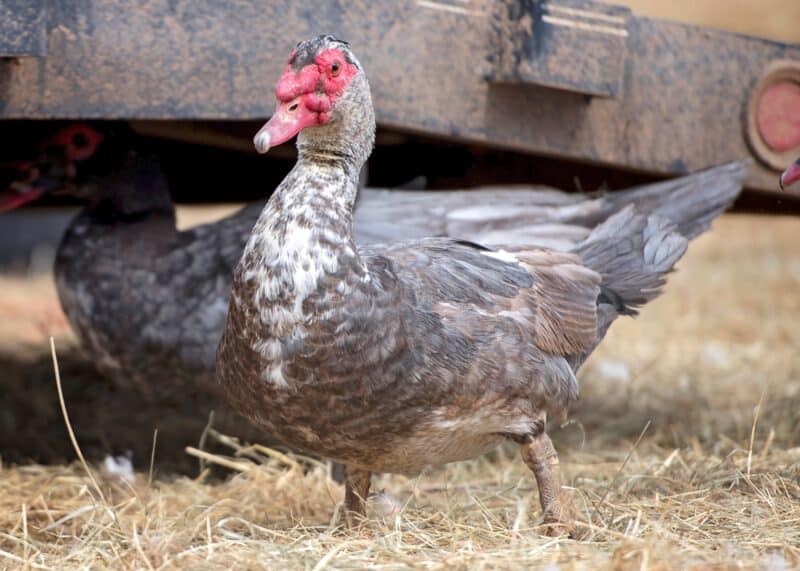
To help you find that breed, I’m bringing you in-depth guides that will tell you everything you need to know about raising and caring for some of the most popular domestic ducks around. Today we look at the Muscovy.
These big, fascinating ducks have a reputation for being quiet and an excellent choice for meat but also for being difficult to handle… but if you’re up for the challenge, keep reading and you’ll know all there is to know about them.
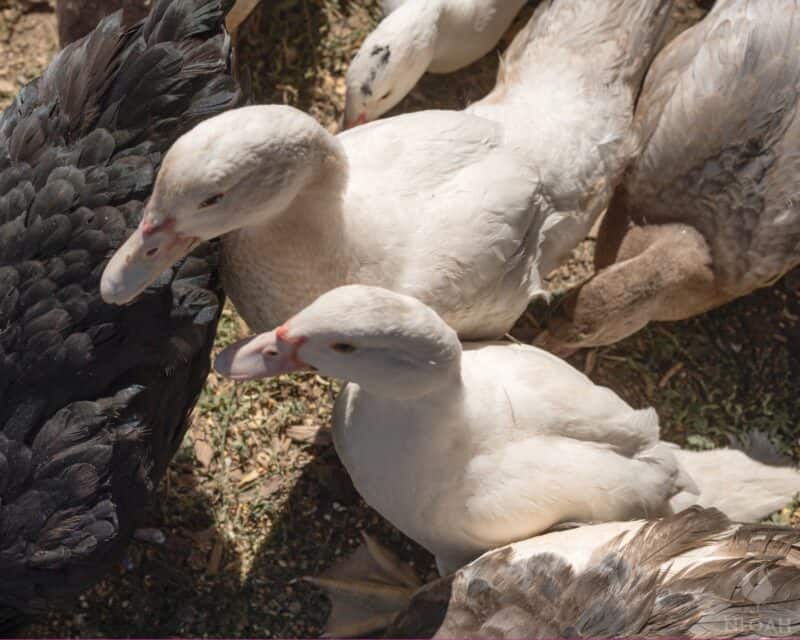
Physical Characteristics
Muscovies are instantly recognizable for two primary traits: their great size and also their bright red facial caruncles. There’s no mistaking them for any other breed!
They are truly huge, with mature drakes weighing up to 15 pounds, though hens are significantly lighter, usually maxing out around 8 pounds. This extreme physical disparity is present and notable even in ducklings, and only becomes more apparent as they grow.
Their caruncles are red, fleshy growths that grow from the base of, and slightly over, the bill all the way up and around the eyes, and can sometimes even be found on the back of the neck. They are larger, more prominent, and brighter on males, but immediately visible on females too.
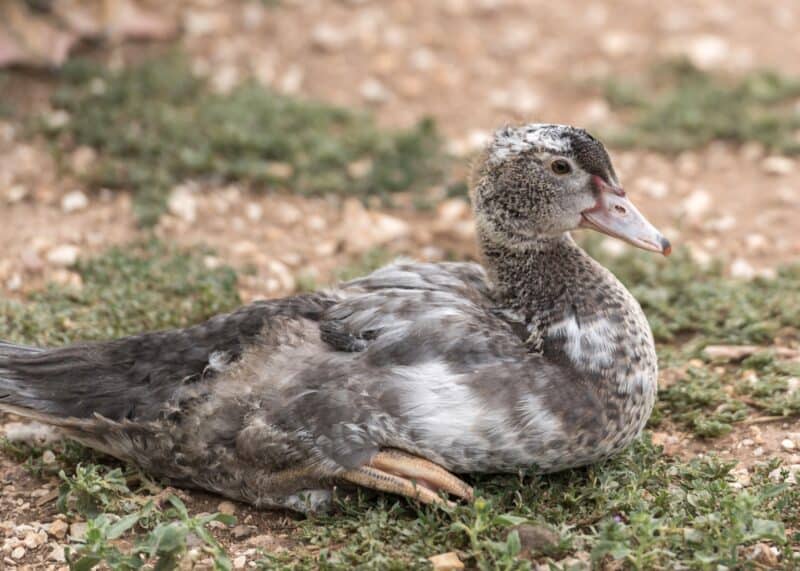
These birds are stout, broad-bodied, and hefty, and if you are used to handling smaller duck species you might be surprised at just how substantial they are. Part of this is because they aren’t really ducks at all, but actually belong to the goose family.
Nonetheless, they’ve been considered domesticated ducks for so long that there is no hope of having them recategorized!
Another notable feature and one you need to watch out for, are their substantial claws. Muscovies are often known as wood ducks or forest ducks because of their propensity to nest in hollow trees and retreat up into branches for roosting, shelter, and escaping predators.
They use their claws to help them grip trees and also, as expected, as a formidable defensive weapon. Combined with their size and strength, these ducks can give you a serious scratching, so be careful!
What are Muscovy Ducks Kept For?
Muscovies are mainly raised for their meat, and they have a reputation for an excellent carcass yield that’s proportional to their size, minimal waste, and also high quality.
Muscovy duck is said to taste closer to many kinds of red meat than to poultry, because of its richness and savoriness. It’s a popular item even in the best restaurants around the world, but you can enjoy it yourself at home if you raise them and learn how to butcher them!
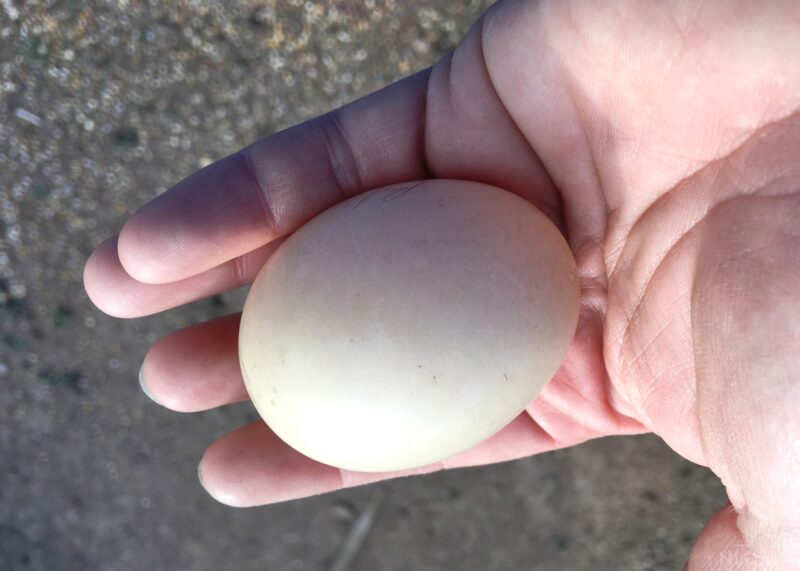
They can also provide you with a useful supply of eggs, though they don’t lay as many as other breeds – and they also tend to be highly broody. This can make keeping a reliable flow of eggs coming very challenging…
Believe it or not, some people raise them just for the fun of it. They are hardy, self-sufficient, certainly interesting to look at, and also tend to be highly active, meaning they are a lot of fun to watch. And, with the right upbringing, they can be reasonably friendly, and you can interact with them.
Are These Ducks Friendly?
Speaking of friendliness, Muscovy ducks have a reputation for being kind of standoffish. It’s not that they’re hostile to people, particularly if you have a domestic bird; they can be pretty easy to handle if you raise them from ducklings.
Remember, there are wild Muscovies and domestic Muscovies, and though they are almost identical they do not behave the same in practice!
That said, they do not like to be picked up, they don’t particularly like petting, and they’ll never be snuggly ducks that are happy to sit on your lap, except in the case of rare individuals.
They also tend to be a little standoffish and enjoy keeping to themselves, though they’ll be happy to see you if you bring a treat to them.
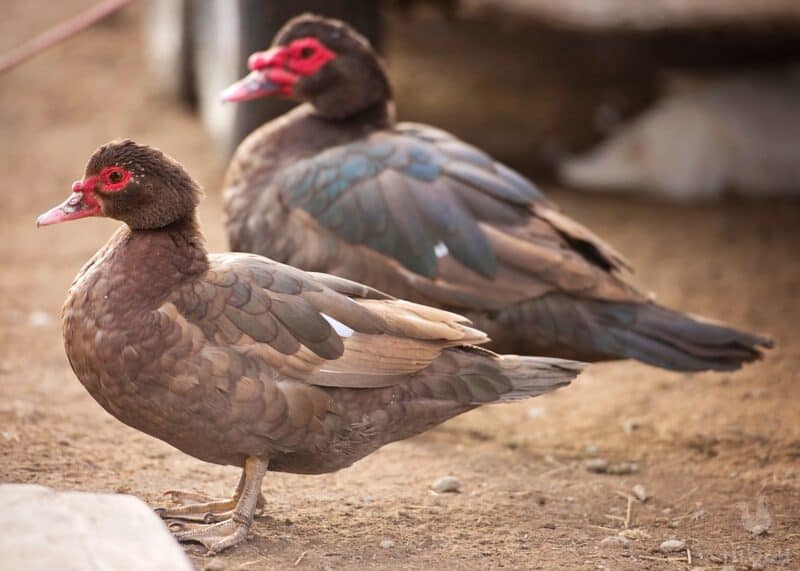
Caution: Drakes are Extremely Competitive
One thing to keep in mind with Muscovies is that drakes are absolutely notorious for their competitiveness with each other. Even with enough hens to go around, drakes will still fight for hours, even all day long, to establish the pecking order and who’s the top bird in the flock.
A fight between two large drakes, both in their prime, can get pretty ugly and result in injuries, particularly to the head and neck of the loser.
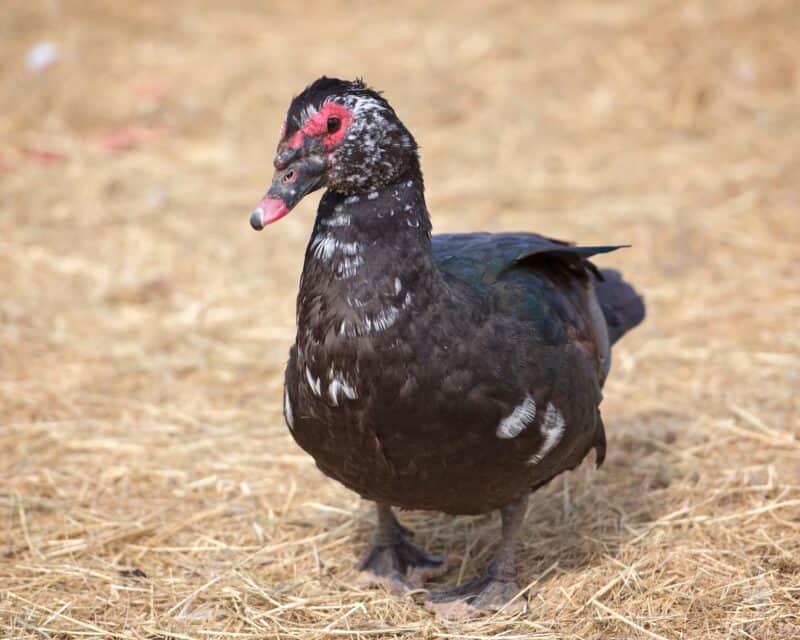
In response, you’ll often see the male that gets the short end of the stick in fights grow additional caruncles around their neck and head as a means of protection.
Maintaining a good ratio of males to females is critical, and you should definitely consider having only a single drake in a flock.
What’s the Best Sex Ratio for Your Flock
As mentioned, if you’re going to have a mixed flock of Muscovies you’ve got to do everything you can to keep males from tearing each other apart. If there aren’t enough hens between them, fights will get even worse than they usually are.
And even worse yet, the hens will start to suffer because they will end up being overbred, meaning forcibly mated by more than one male.
At the minimum, you need no less than 6, and preferably 7, females for every male in the flock. Again, consider having only a single drake: he can easily breed 10 to 12 females himself.
Are Muscovies Noisy?
No, they aren’t! And this brings us to one of the very best parts about owning these intriguing, huge ducks: They don’t quack. In fact, they are nearly silent unless they are fighting, agitated, or issuing a threat display to protect their nest or young.
There are no ducks that are quieter than Muscovies, and considering that ducks tend to stay up at all hours of the night (because they don’t go to bed at dusk like chickens do), this means that your own nights will be a lot quieter and more enjoyable.
Do They Need a Pond or Other Water Feature?
Yes, they do, but they don’t spend nearly as much time on the water or wading compared to other ducks.
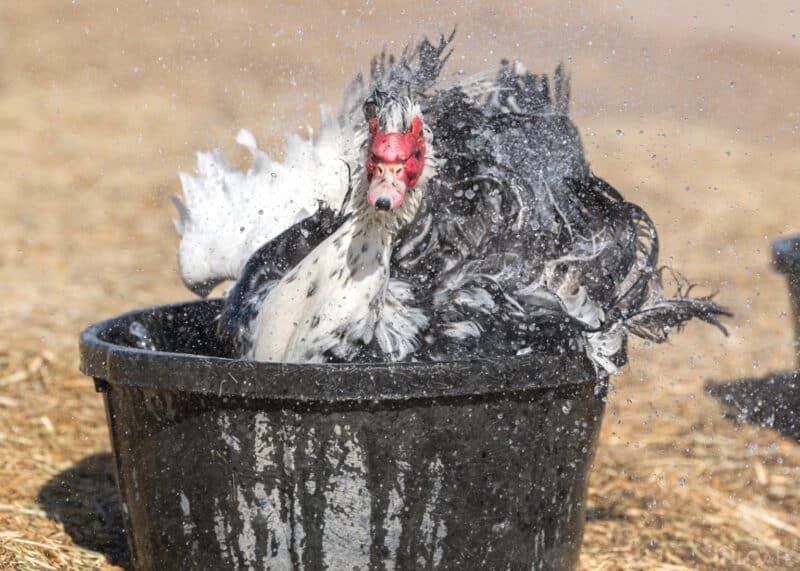
Make no mistake, they still need a water source for bathing, drinking, and more, but you definitely won’t need a pond, lake, or anything like that. A sizable kiddie pool or a small, in-ground water feature is generally adequate for them as long as you keep it clean.
Do Muscovies Need a Shelter or Coop?
Yes, they do, but the ideal shelter for them is a little different from most ducks. This is because Muscovies prefer to nest and retreat up high when they can. If you give them a shelter, roosting bars like you would use for chickens are a good idea. Also, a snug, enclosed area will give them comfort and a sense of safety.
These are ducks that hail from a hot climate, and they tend to do good in temperate or subtropical regions, but they are quite cold-resistant down to 20° F (-6° C) or a little colder.
Accordingly, a basic shelter that gives them protection from wind and precipitation is usually more than adequate because they can heat it with their own body heat.
Do Muscovies Fly?
Yes and no. This is a subject of considerable debate on the internet, and I’ve already talked about it in detail before. I’ll try to set the record straight here, but briefly.
Wild Muscovies, which you might end up with depending on who you buy your birds from, can fly and fly extremely well. If you don’t clip their wings, they will fly the coop at the drop of a hat.
Still, domestic ones have been selected for greater size and a somewhat flabbier physique. Males, simply, are too big to fly once they are fully mature.
Adolescent males, though, smaller adults, and particularly females might be able to fly for relatively short distances, though they don’t fly as well as their wild cousins.
This means that wing weights, wing clipping, or enclosed runs are necessary to keep these birds in place unless you are 100% sure that your Muscovies particularly cannot take flight.
And even in this case, the ones that can’t fly tend to be excellent jumpers because their wings can provide them with plenty of thrust. Tall fences, at least 6 feet (1.8 meters), are needed unless you clip their wings.
When is the Best Time to Harvest Muscovies for Their Meat?
As mentioned several times, Muscovies are really big ducks, and even though the domestic variation has been selected for size they don’t grow as fast as other large, heavy ducks like Pekins.
At the very earliest, you can harvest a Muscovies for meat at around 16 weeks of age, and it will probably be closer to 24 weeks. They won’t be fully mature, physically, and at their maximum weight until they’re 8 months.
How Many Eggs Do Muscovy Hens Lay?
Muscovies aren’t the best layers. At most, expect to get 150 large eggs yearly, though this is considered the maximum for young and healthy hens. A more reasonable figure is around 80, plus or minus a few.
When Do Muscovies Start Laying?
Muscovy hens are sexually mature and start laying between 6 and 7 months of age.
Are Muscovies Broody?
Yes, extremely! This is part of the issue with keeping Muscovies for egg production: females will typically lay anywhere from 12 to 20 eggs in a clutch and then become extremely broody, sitting on them with the intention of hatching them. When this occurs, she stops laying and that means no more eggs.
You can sometimes get her to keep laying if you collect eggs twice a day, because without a sizable clutch she might not get the urge to sit, but this is dicey…
The good news is that these ducks are excellent mothers, and their eggs have high hatching rates. They tend to be very doting and attentive to their ducklings, and most will be expected to survive to maturity through her care alone.
How Big Should Their Nesting Box Be?
A good nesting box enclosure is pretty snug considering their size. Remember, these ducks feel safe and secure in small, enclosed spaces.
Two feet high by one and a half feet deep and wide is adequate, and if you really want to encourage her to use it, give it an opening in the front that is about 10 inches in diameter; this better simulates the hollowed-out trees that Muscovies typically like to nest in the wild.
Line the interior of the nesting box with a deep layer of clean, untreated sawdust, dried grass, and similar dry but warm litter.
When Do Muscovy Eggs Hatch?
Everything about Muscovies is slower to develop, and that includes the hatching of their eggs. They typically take 35 days to hatch, whether they are in an incubator or mom is sitting on them.
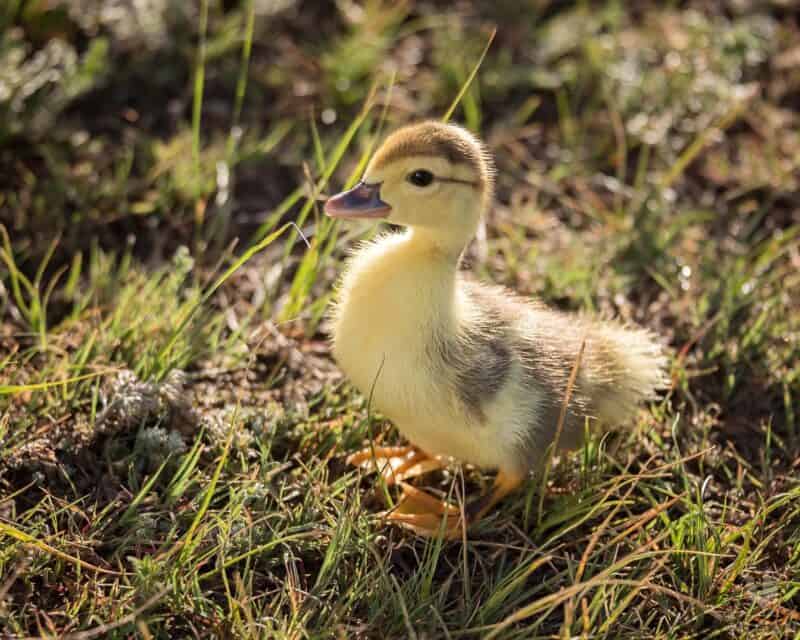
How Long Does It Take for Muscovies to Mature?
A Muscovy duck can be considered an adolescent, nearly to adulthood, at about 6 months old but won’t be fully mature physically and at its full adult weight until 8 months.
What Do Muscovies Eat?
A great food option for these ducks is, as with all others, a nutritionally complete waterfowl or game bird feed. This will satisfy their higher protein requirements and also provide them with most, or all, of the vitamins and minerals they need to thrive.
This diet can be supplemented with grit, of course, and also whole foods in the form of insects, grubs, snails, small fish, amphibians, eggs from all of the above creatures, leafy greenery, and various kinds of forage.
In keeping with their mostly wild phenotype, Muscovies are pretty good foragers, and if you have a lush property that you’re okay with letting them roam on, they can provide much of their own food.
And, as ever, they must have unlimited access to fresh, clean water for drinking.
Are They Typically Healthy?
Muscovies, like most domestic ducks, are quite healthy at least compared to chickens and other kinds of poultry. However, and somewhat strangely, they appear to be slightly more vulnerable to internal and external parasites compared to other breeds.
This is rarely a cause for major concern so long as you are keeping up with cleanliness and good hygiene, and of course, these conditions are treatable, but it is something to be aware of.
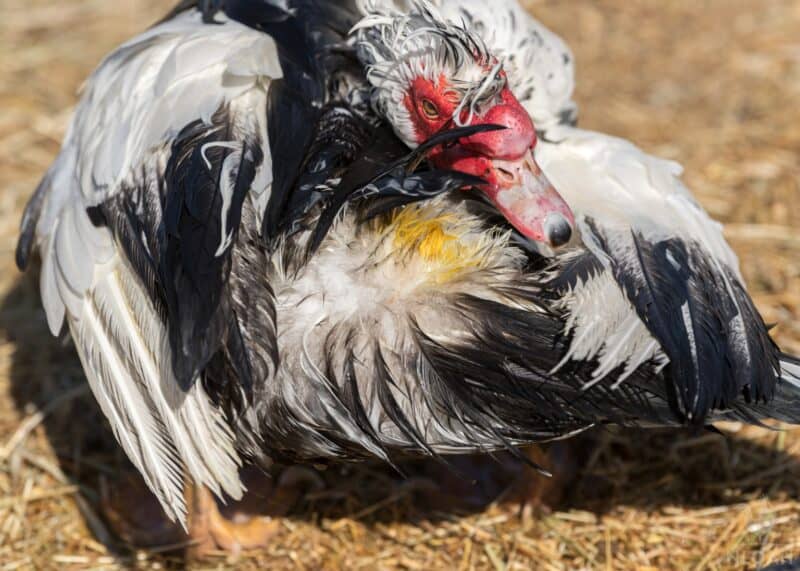
You’ll also need to keep a close eye out for bumblefoot, particularly in the males. These guys are so big and so heavy if they step on anything sharp or otherwise injurious, they are very likely to be wounded on their feet and that will get infected in a hurry.
Also, for any birds with clipped wings or the larger individuals generally, you must take care that they cannot fall or slip from a high place: they usually cannot break their fall in time and can easily be injured.
Pay attention that roosting bars are adequately wide and easy for them to jump up to and down from. The same thing goes for the ramp into their shelter if you are using one.
Muscovy Photo Gallery
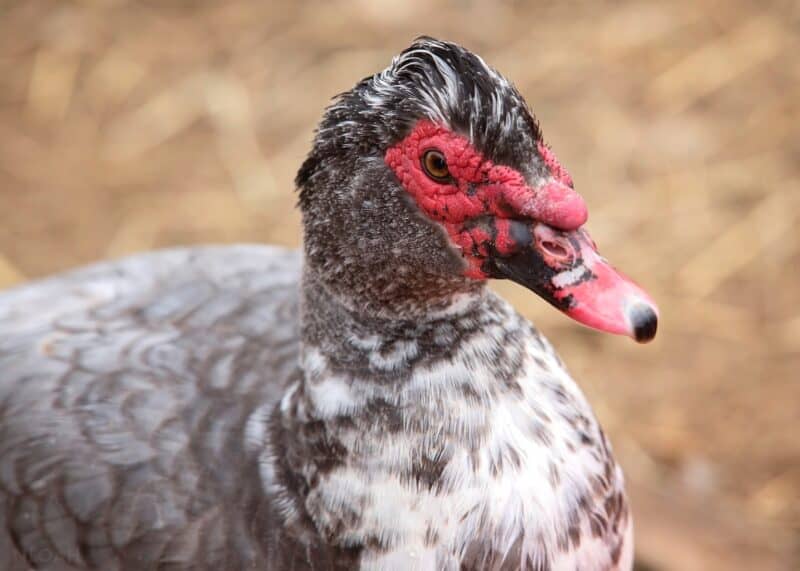
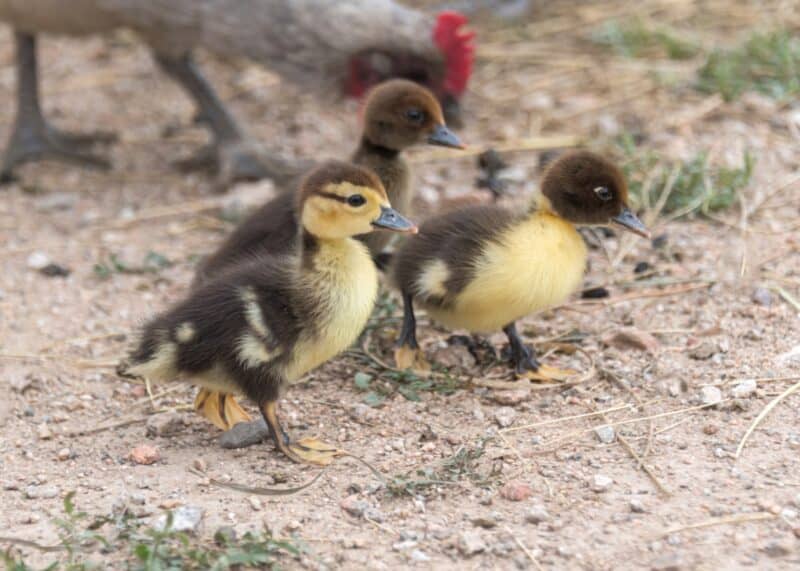

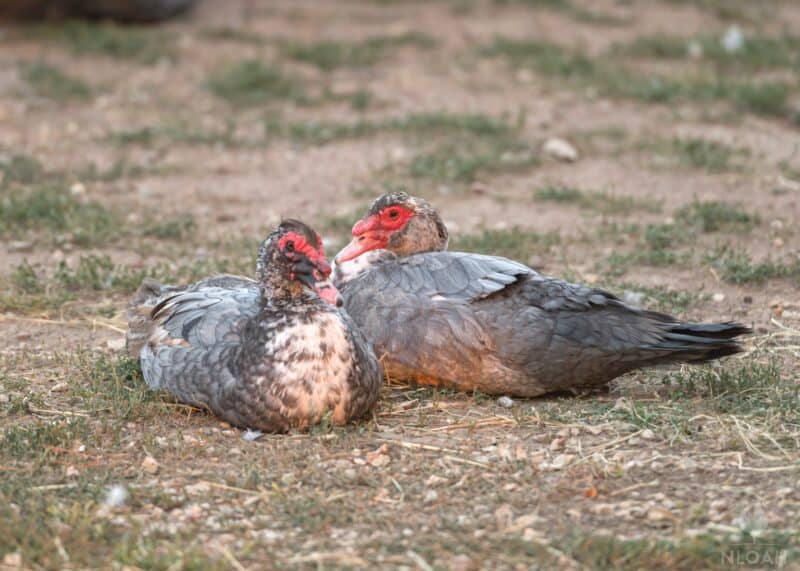
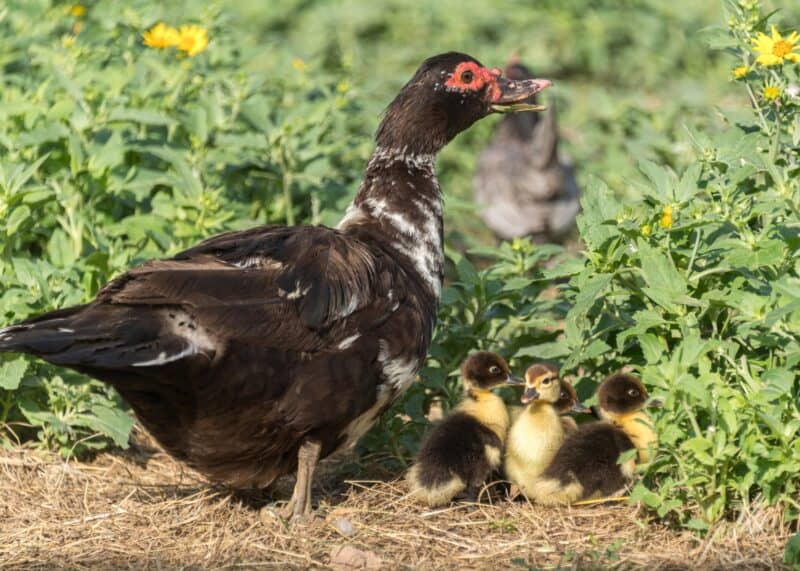

Do Muscovies Have Many Predators?
Muscovies have all of the usual duck predators that you’d expect, from birds of prey like eagles, hawks, and owls to terrestrial ones like coyotes, dogs of all kinds, large felines, raccoons, badgers, bears, and so forth.
Their eggs are also definitely on the menu for smaller slithering and crawling critters like rodents and snakes.
But, Muscovies are significantly more resistant to many of the smaller predators compared to most other domestic birds. It is difficult to overstate just how big and strong these birds can be, and they will fight ferociously, drakes in particular, if attacked or if protecting their young or flock.
The sheer size of these big birds is often enough to deter smaller birds of prey entirely, and I’ve seen them fight tenaciously enough that even foxes and coyotes think twice. Remember that they have substantial talons (by duck standards) and will use them to slash and shank attackers!
But don’t get it twisted: they’re still just ducks, and that means they are still prey. They need protection and other predator countermeasures as usual, including a secure enclosure if you live in an area that is known for high predator activity.
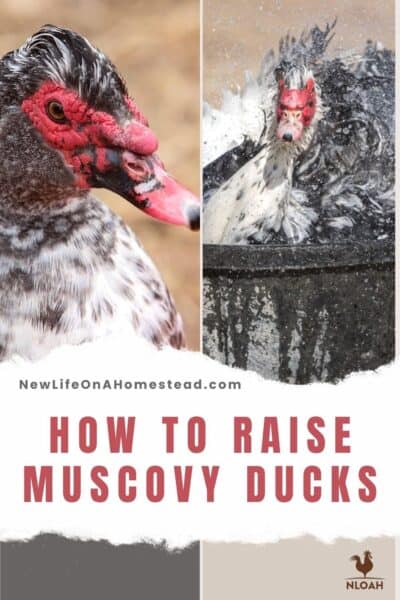
Tom has lived and worked on farms and homesteads from the Carolinas to Kentucky and beyond. He is passionate about helping people prepare for tough times by embracing lifestyles of self-sufficiency.
